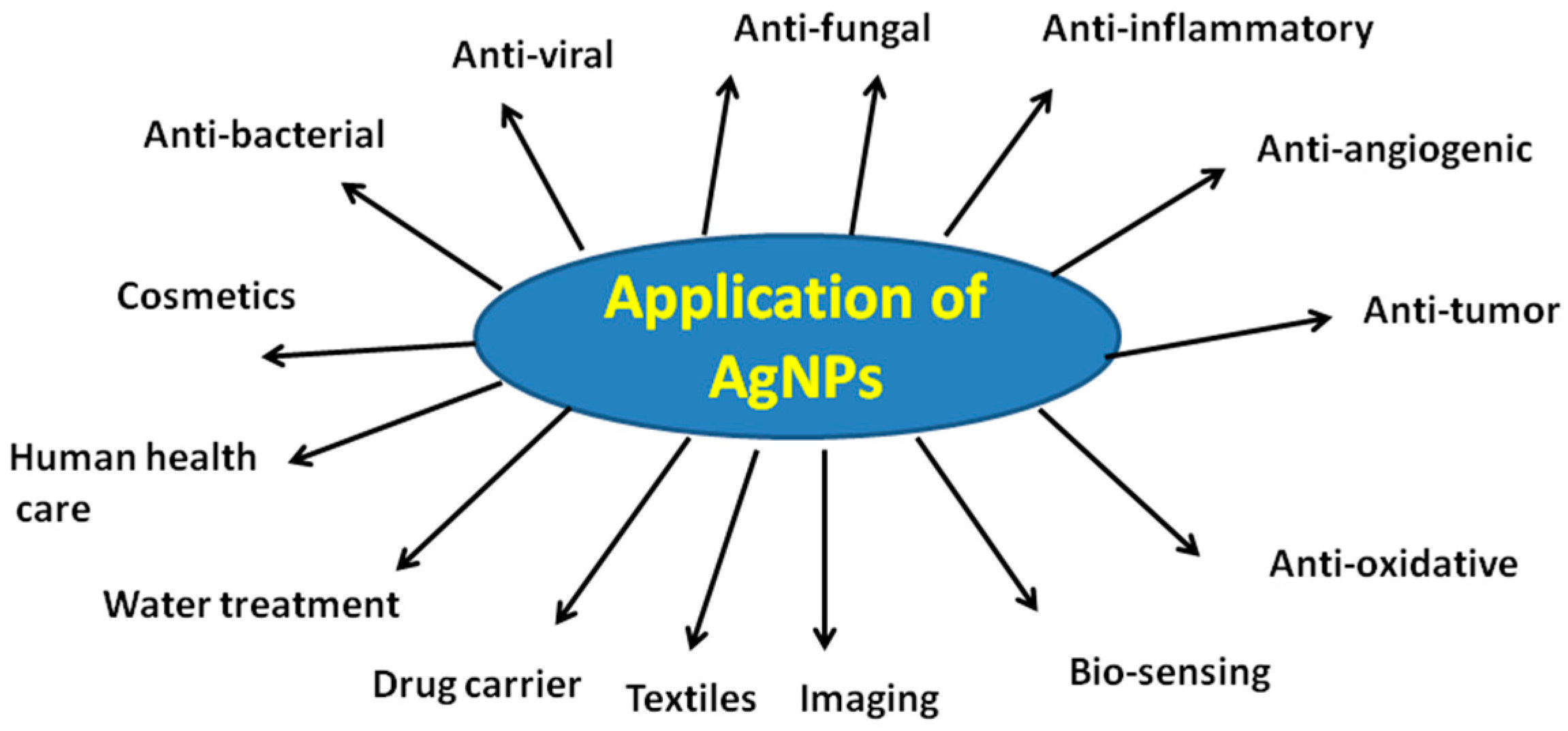
Silver nanoparticles Properties has many medical applications including diagnosis, treatment, drug delivery,
coating tools and medical devices. Nanosilver is used for coating medical tools and materials used in the areas
of surgery, anesthesiology, cardiology and urology . It is also incorporated in wound dressings, diabetic socks,
scaffolds, sterilization materials in hospitals, medical textiles, medical catheters and contraceptive devices.
Nanosilver is used in orthopedics in areas such as additives in bone cement, coating of implants for joint
replacement and bone prostheses
Silver nanoparticles Properties
Silver nanoparticles Properties is used in dentistry for making artificial teeth and in eye care for coating contact
lenses . Advanced silver nanotechnologies are used to improve battery performance in next-generation active
implantable medical devices. The use of nanosilver in combination with vanadium oxide in battery cell. These
factors affect the chemical reactivity of materials as well as their mechanical, optical, electric, and magnetic
properties. Nanosilver has chemical and biological properties that are appealing to the consumer products, food
technology, textiles/fabrics, and medical industries. Nanosilver also has unique optical and physical properties
that are not present in bulk silver, and which are claimed to have great potential for medical applications.
Silver nanoparticles Properties Antibacterial properties: Nanosilver is an effective killing agent against a broad
spectrum of Gram-negative and Grampositive bacteria , including antibiotic-resistant strains (Percival et al., 2007;
Wright et al., 1998). Gram-negative bacteria include genera such as Acinetobacter, Escherichia, Pseudomonas,
Salmonella, and Vibrio. Acinetobacter species are associated with nosocomial infections, , infections that are the
result of treatment in a hospital or a healthcare service unit, but secondary to the patient’s original condition.
Gram-positive bacteria include many well-known genera such as Bacillus, Clostridium, Enterococcus, Listeria,
Staphylococcus, and Streptococcus. Antibiotic-resistant bacteria include strains such as methicillin-resistant and
vancomycin-resistant Staphylococcus aureus, and Enterococcus faecium. Silver nanoparticles (diameter 5-32 nm,
average diameter 22.5 nm) enhance the antibacterial activity of various antibiotics . The antibacterial activities of
penicillin G, amoxicillin, erythromycin, clindamycin, and vancomycin against Staphylococcus aureus and
Escherichia coli increase in the presence of silver nanoparticles (diameter 1-450 nm) antimicrobial activity of
silver nanoparticles has been reported with Gram-negative bacteria. Small nanoparticles with a large surface
area to volume ratio provide a more efficient means for antibacterial activity even at very low concentration
Silver nanoparticles Properties Antibacterial mode of action: Bacteria have different membrane structures,
which are the bases of their general classification as Gram-positive or Gram-negative. Structural differences
reside in the organization of the key component of the cell wall, peptidoglycan, which is located immediately
outside the cytoplasmic membrane. The cell wall of Gram-positive bacteria contains a peptidoglycan layer that is -30 nm thick. Unlike the Gram-positive cell wall, the Gram-negative cell wall has only a thin peptidoglycan layer that is ~2-3 nm thick. In addition to the peptidoglycan layer, the Gramnegative cell wall also contains an
additional outer membrane composed of phospholipids and lipopolysaccharides, which face into the external
environment.
Silver nanoparticles Properties: Nanosilver is an effective, fast-acting fungicide against a broad spectrum of
common fungi including genera such as Aspergillus, Candida, and Saccharomyces . The exact mechanisms of
action of silver nanoparticles against fungi are still not clear, but mechanisms similar to that of the antibacterial
actions have been proposed for fungi (Wright etal., 1999). Silver nanoparticles (diameter 13.5 ± 2.6 nm) are
effective against yeast isolated from bovine mastitis Antiviral properties: Silver nanoparticles Properties (diameter 5-20 nm, average diameter ~10 nm) inhibit HIV-1
virus replication. Gold nanoparticles (average diameter ~10 nm) showed relatively low anti HIV-1 activity (6-
20%) when compared to silver nanoparticles (98%). Sizedependent antiviral activity of silver nanoparticles has
been shown with HIV-1 virus . Interaction of silver nanoparticles with HIV-1 was exclusively within the range of
1-10 nm
A Silver nanoparticles Properties: Nanosilver dressings as well as nanosilver-derived solutions proved to have
anti-inflammatory activity . In animal models, nanosilver alters the expression of matrix metallo-proteinases
(proteolytic enzymes that are important in various inflammatory and repair processes) , suppresses the
expression of tumor necrosis factor (TNF)- , interleukin (IL)-12, and IL-1 , and induces apoptosis of inflammatory
cells (Bhol & Schechter, 2005, 2007). Silver nanoparticles (diameter 14 ± 9.8 nm) modulate cytokines involved in
wound healing (Tian et al., 2007). The results indicate the possibility of achieving scar-less wound healing even
though further studies using other animal models are required to confirm this.
Anti-glycoprotein film properties: Glycoproteins are proteins that contain oligosaccharide chains that are
covalently attached to polypeptide side-chains. These proteins are important for normal immune system
function such as white blood cell recognition, and often play a role in cell-cell interactions. Examples of
glycoproteins in the immune system include molecules such as antibodies that interact directly with antigens. In
the case of impregnation of medical-grade silicone with silver nanoparticles (diameter 10-100 nm) there is both
a depot effect and a diffusion pressure available to equilibrate the silver concentration and to push silver
through the glycoprotein conditioning film . This unexpected finding has obvious clinical implications, because
silver is known to have a high avidity to protein and the presence of a lycoprotein film has been assumed to
inactivate any silver ions released. Surfaces of implanted devices immediately and rapidly become coated with
patient-derived glycoproteins from tissue and blood plasma . Once protein adhesion has occurred, proliferation
leads to the development of a biofilm which is insusceptible to most therapeutic agents.
We invite you to contact us for further information about our company and our capabilities. If you want to buy
nanomaterials or discuss Oxide Nanoparticles, you can mail us at sales@nanomaterialpowder.com
